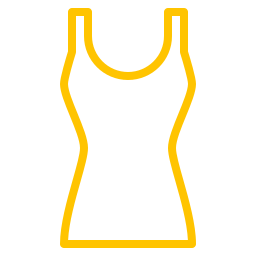Expert tips on how to overcome five of the most common breastfeeding challenges that can occur after one month.
Now you and your baby are settled into a routine and know what you’re doing, any breastfeeding difficulties might feel like a distant memory. But there may still be a few surprises in store. Here’s my advice on tackling potential breastfeeding problems that could lie ahead.
Challenge 1: I have to spend time apart from my baby
Whether it’s for a social occasion, travelling, or medical treatment, at some point you may need to be away from your breastfed baby for a while.
Solutions
- Pump milk so a caregiver can feed your baby. Now breastfeeding is established, you can express then store your breast milk in the fridge or freezer. You may have to experiment to find the best time to slot expressing into your routine – some mums find pumping in the morning after their baby has slept for longer more effective. For others the best time is 60 minutes after a breastfeed, but remember everyone is different. Don’t be disappointed by the amount you collect at first – you’ll probably need to pump two or three times to get enough for a single feed. Just as with breastfeeding, it can take time for your body to become efficient at expressing.
- Take a breast pump with you if you’re going to miss a breastfeed. You’ll need to remove milk if you’re going away for more than a couple of hours, even if you’ve left some for your baby. Express as often as she would feed to maintain your supply and prevent discomfort. Be sure to do this regularly throughout the day and avoid waiting until your breasts are really full before pumping.1 Most electric breast pumps can also be battery-operated, so you don’t need access to an electrical socket.
Challenge 2: How do I breastfeed now that I’m returning to work?
If you’re returning to work, you’ll probably be away from your baby for longer, more frequent, periods, so it’s even more important to find ways of managing breastfeeding and pumping to suit you both. As described above, you can build up a stock of expressed milk before you go back to work and then pump regularly while there to maintain your supply, prevent discomfort, and ensure your baby has plenty for the next day. Many workplaces are set up for expressing, and modern breast pumps are efficient and reliable. If you work regular hours or are part-time, you might still be able to breastfeed your baby directly before and after work, as well as at night.
Solutions
- Express as often as your baby would feed, as this will help maintain your milk supply, as well as prevent discomfort and reduce the risk of blocked ducts, mastitis and engorgement.1
- Try double pumping. As well as halving the expression time, double pumping removes 18% more milk on average than expressing from each breast in turn. The milk has a higher fat and calorie content too.2
- Put together a kit that includes a breast pump, milk storage bags, plus a hands-free pumping bra if you want to use one, to take to work. You’ll also need a cooler bag to transport expressed milk in.
- Know your rights. Many countries have laws giving women the legal right to pump and store their breast milk safely at work. Discuss expressing facilities and logistics with your employer before returning so you’re both prepared.
Challenge 3: I think my baby’s just sucking for comfort
You may sometimes feel your baby is using your nipple as a soother, rather than to get milk. Remember breastfeeding isn’t just about food, it also comforts your baby. ‘Non-nutritive sucking’ (where she sucks at the breast without taking milk) helps calm and relax her. Be aware that sudden more frequent or longer feeding sessions may signify a low milk supply – although if your baby is gaining weight and producing the expected number of wet and dirty nappies per day this is unlikely.
Solution
- Be patient. Your baby needs your reassurance, so go with the flow and give her that support. This period of sucking for comfort doesn’t usually last too long, and it will help your baby feel secure and loved – the very best thing you can do for her.
Challenge 4: I want to move from mixed feeding to exclusive breastfeeding
Because breast milk has so many benefits for you and your baby, it’s certainly worth trying to make the move, although if you haven’t been breastfeeding frequently your supply may be low. If you’ve only been mixed feeding for a couple of weeks you may be able to increase your supply – speak to a lactation consultant or breastfeeding specialist to help guide you through this process. This is a very individual journey and depends on many factors. However, don’t be disheartened, as every drop of breast milk you feed your baby is precious.
Solutions1,3
- Boost your milk supply. Encourage your baby to feed from the breast often, as the more milk she consumes, the more you’ll make. You can also do some additional expressing, as explained above – double pumping in particular can help increase your supply further.
- Enjoy lots of skin-to-skin. Just like when your baby was a newborn, close contact helps the hormone oxytocin flow, which in turn triggers your milk supply. An added bonus is it makes you both feel calm and relaxed.
- Cut formula feeds gradually. Resist the temptation to stop using formula suddenly. If you’ve been doing a top-up after every feed, go to every other feed while your breast milk supply increases. Keep a close eye on your baby’s nappies and weight gain during this transition period. You may find she’ll want to feed more frequently at first, which is perfectly normal.
- Work with a lactation consultant or breastfeeding specialist. They will be able to guide you and build your confidence that your baby is getting what she needs.
Challenge 5: My baby has lost interest in breastfeeding
If your previously enthusiastic baby suddenly refuses the breast for no apparent reason, it’s called a ‘nursing strike’. You might assume she’s ready for solids or that your milk is not satisfying her, but this is unlikely. Instead, her developing eyesight may mean she’s more distracted by the world around her. Or perhaps she’s been startled during a feed, is reacting to a disrupted routine, has a stuffy nose, or has sore gums from teething. What you think is lack of interest could just be your baby becoming more efficient at breastfeeding, so she isn’t feeding for as long as she used to.
Solutions
- Be patient. It may take a few days but most nursing strikes are temporary. In the meantime, make sure your baby is receiving all the nourishment she needs by feeding her expressed milk.
- Retreat to a quiet place with minimal distractions. Your baby may be more likely to have a good feed if she’s able to concentrate and is feeling relaxed.
- Check your feeding position. If your baby is uncomfortable or cannot move her head to breathe during the feed, she may refuse your breast.
- Keep up your milk supply by pumping. You can try feeding your baby the expressed breast milk using a Medela Calma teat.
- Don’t introduce formula feeds or early solids. Topping up with formula could mean your milk supply dwindles, making the situation worse. As long as your baby is having regular feeds of expressed milk, is growing well, and pooing and weeing as expected, try not to worry. If she’s under six months, don’t introduce solids, as her delicate digestive system may not be ready for them.
- Never force breastfeeding. Try to relax with your baby and enjoy lots of skin-to-skin contact and cuddles, offering the breast often, and letting her try to attach herself. The oxytocin boost from being close will also help you express milk.4
- Kent JC et al. Principles for maintaining or increasing breast milk production. J Obstet, Gynecol, & Neonatal Nurs. 2012;41(1):114-121.
- Prime DK et al. Simultaneous breast expression in breastfeeding women is more efficacious than sequential breast expression. Breast Med. 2012;7(6):442-447.
- Amir L. Breastfeeding managing ‘supply’ difficulties. Aust fam physician. 2006;35(9):686.
- Moberg KU, Prime DK. Oxytocin effects in mothers and infants during breastfeeding. Infant. 2013;9(6):201-206.























